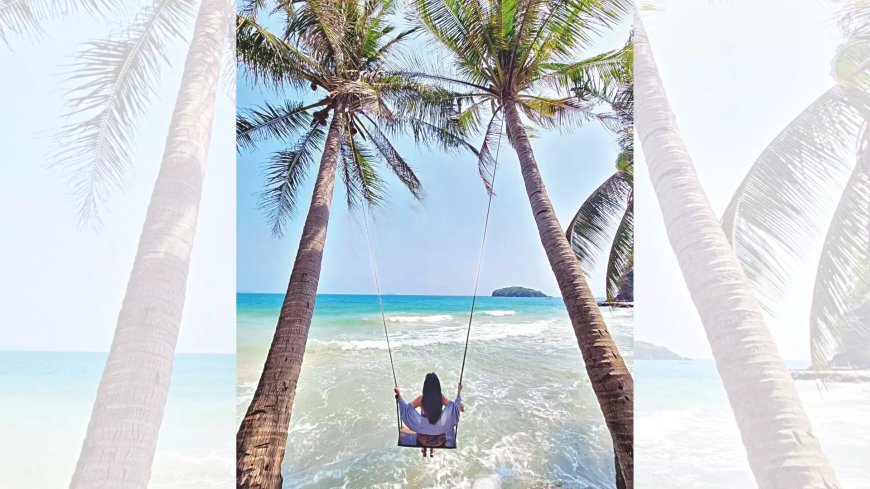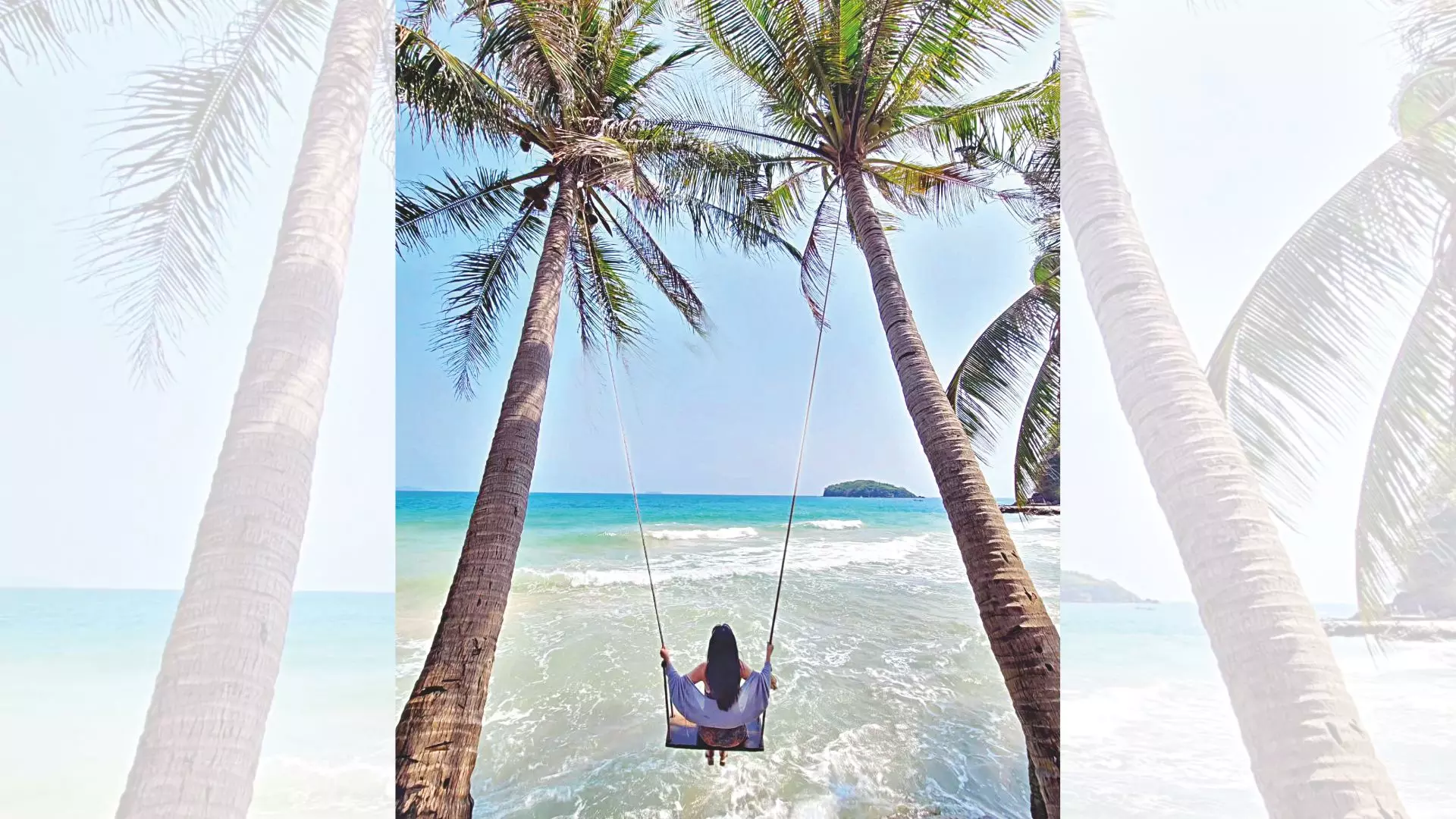‘Paris Syndrome’ hits desi shores
The ‘Paris syndrome’ is a universal reminder of the consequences of overhyping tourist destinations


Looks like the ‘Paris Syndrome’ has landed on Indian shores, especially in Goa. While Paris has long been associated with ‘Paris Syndrome’ – a term describing the profound disappointment when romanticized expectations clash with reality – similar sentiments are emerging about Goa, Pattaya, Bang-kok, Paris, Venice, Bali, Barcelona and Amsterdam among other popular tourist destinations.
Tourism, a cornerstone of economic growth and cultural exchange, faces challenges threatening its appeal at iconic global destinations. Several factors are responsible for this – overcrowding, environmental degradation, shoddy infrastructure, commercialisation of local culture, and strain on natural resources are driving a decline in tourist satisfaction and visitation rates.
The bigger problem is the “Tourist Syndrome.” Tourist syndrome is when tourists behave badly on their holiday. Some deface historic monuments and places, abuse the natural beauty, cause a nuisance, and then malign the tourist destination on social media.
Tourism Overkill
For years, Goa’s sandy beaches, cool breeze, balmy water, magnificent churches, and ‘susegad’ life have been a major crowd-puller. But in recent years, the overcrowded beaches, towering hotel tariffs, arbitrary taxi fares, and soaring flight tickets have taken a toll on its image. Perhaps, the reason why many domestic and foreign tourists flocked to Thailand, Malaysia, Vietnam, and other affordable tourist hotspots this year.
The Paris Syndrome has long been a cautionary tale for travellers. Popularized in the late 20th Century, the phenomenon particularly affects first-time visitors who come to Paris with unrealistic expectations of a postcard-perfect city filled with romance, elegance, and charm. However, many encounter the stark realities of urban life, including overcrowded attractions, filthy streets, petty crimes, expensive hotels, and occasional local indifference. This gap between fantasy and reality leads to feelings of disappointment, culture shock, and, in extreme cases, psychological distress.
The Paris syndrome is a universal reminder of the consequences of overhyping tourist destinations. Paris, Barcelona, Amsterdam and Venice, Vietnam, Jakarta, Prague, Orlando (US) are facing the brunt of overcrowding, high costs and the ‘tourist syndrome.’
Go Goa Gone
Goa, often referred to as the ‘Pearl of the Orient,’ has long been a tourism magnet due to its beaches, nightlife, and blend of Indian and Portuguese heritage. However, its allure has dimmed in recent years.
“Goa attracts many tourists during Christmas and New Year. But soaring costs, including Rs 22,000–33,000 flight ticket costs, rival Dubai trips. Indian tourists often follow trends until destinations, like Bangkok, Vietnam and Baku, lose their appeal,” says Hemant Bhoir, director of Bhoir Tours & Holidays.
A few weeks ago, videos of Goa’s sparse beaches and empty streets along Candolim, Calangute and Baga during peak season went viral. Goa Tourism Minister Rohan Khaunte slammed the X posts saying, a handful of “paid” social media influencers were defaming Goa. “People come to Goa for its beauty, creativity and other things… You cannot compare it (Goa) with Thailand. We don’t want to experience a Thailand in Goa,” Khaunte told the press on January 2, 2025.
Goa Chief Minister Pramod Sawant too blamed ‘paid influencers’ for spreading the wrong message. “All the hotels in Goa and flights to Goa are full,” Sawant asserted. The Depart-ment of Tourism even highlighted a “robust resurgence” in domestic tourism, sharing figures stating that over 8 million Indian tourists visited Goa in 2023, a figure that exceeds pre-pandemic numbers. It also reported that 4.5 lakh foreign tourists came to Goa last year.
Spoiled For Choice
The debate between the “rise” and “fall” of tourists in Goa will continue for some time. However, domestic tour operators feel the tourism boom has given travellers options beyond Goa. Narayan from R.K Trips and Outings Tour Operating Agency cites the Konkan coastal belt in Maharashtra, which offers pristine beaches and cheaper stays. “While Goa’s cheap liquor is an advantage, its crowded beaches, local restrictions, and high prices deter many visitors. Also, international destinations like Thailand and Sri Lanka, with their affordable stays have become more appealing alternatives for tourists,” Narayan explains. Aditi A, a Goa-based content creator blames the drop in tourist footfalls on Goa’s poor public transport, costly alternatives, mixed tourist behaviour, and disruptive construction projects. �
Time To Act
Tourism trends are shifting globally. Destinations like Venice, Barcelona, and Amsterdam have restricted cruise access to curb over-tourism. In fact, Spain and Amsterdam are seeing declines due to high costs and stricter regulations. Meanwhile, countries like South Korea, Taiwan, and the Philippines are emerging as attractive alternatives, offering affordable travel, rich culture, and less crowded experiences. These countries have effectively marketed their unique heritage and natural beauty, attracting modern, experience-seeking tourists.
Kerala, often referred to as ‘God’s Own Country,’ has masterfully positioned itself as a premier travel destination, attracting both domestic and international tourists. With its lush backwaters, serene beaches, and rich cultural heritage, Kerala offers a unique blend of natural beauty and traditional experiences.
The state’s tourism board has aggressively promoted Ayurvedic retreats, houseboat cruises, and eco-tourism initiatives, branding Kerala as a tranquil escape for relaxation and luxury. This strategy has positioned Kerala as a high-end destination, appealing to affluent travellers willing to pay premium prices.
Goa’s challenges mirror those faced by other global hotspots. Venice, Amsterdam, and Bali are grappling with over-tourism, which overwhelms local resources and diminishes residents' quality of life. Much like the Paris Syndrome, tourist dissatisfaction in these destinations often stems from the clash between expectations and reality.
The Way Forward
As the tourism industry evolves in a post-pandemic world, destinations must adapt to changing traveller expectations. Tourists increasingly seek authentic experiences, where culture, environment, and community intersect.
For tourist hotspots like Paris, Venice, Goa, Prague, Vietnam and Bali, this means preserving their unique charm while managing visitor numbers and promoting sustainability. At the same time, travellers must recalibrate their expectations, embracing the imperfections of real-world destinations rather than chasing idealized fantasies.
Ultimately, the decline of tourism, be it Paris, Amsterdam, or Goa underscores the need for a conscious, responsible approach towards sustainable travel. By balancing development with preservation, destinations can ensure their long-term appeal for future generations of explorers. Bon Voyage!
YOUR Travel Guide
Paris Syndrome:
The ‘Paris Syndrome’ is a term describing the profound disappointment tourists get after seeing a hyped tourist destination because the romanticized expectations clash with reality.
Tourist Syndrome:
The ‘Tourist Syndrome’ is when tourists behave badly on their vacation. Some cause a nuisance to others, disrespect local culture, deface historic monuments, and malign tourist places on social media.
Overtourism:
Places that face over-tourism include Goa, Pattaya, Bangkok, Paris, Venice, Bali, Barcelona, Amsterdam, Jakarta, Prague, Orlando (US, Malaysia, and Vietnam).
People come to Goa for its beauty, creativity and other things… You cannot compare it (Goa) with Thailand. We don’t want to experience a Thailand in Goa.” —Rohan Khaunte, Goa Tourism Minister
Indian tourists often follow trends until destinations, like Bangkok, Vietnam and Baku, lose their appeal.” — Hemant Bhoir, director of Bhoir Tours & Holidays






































